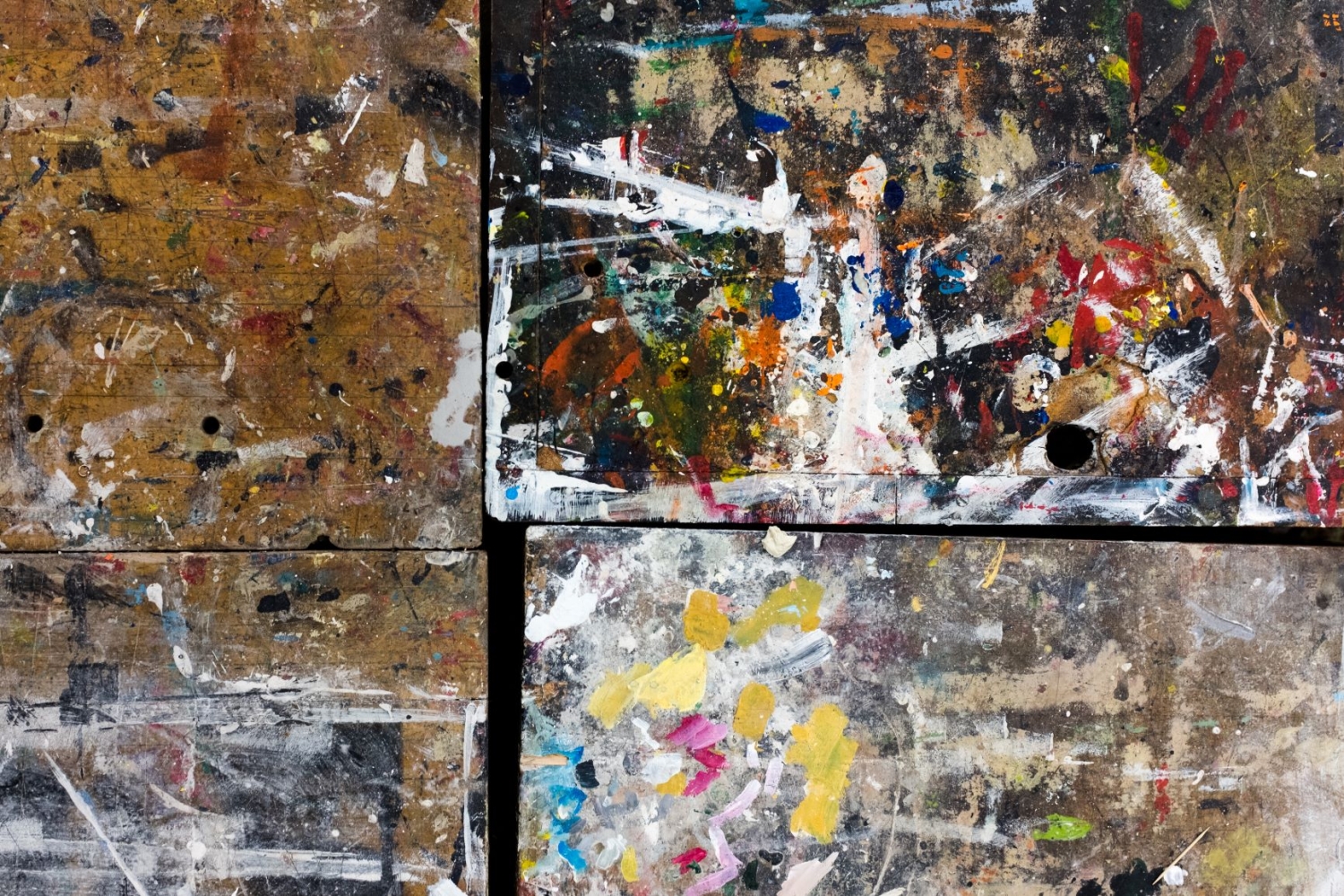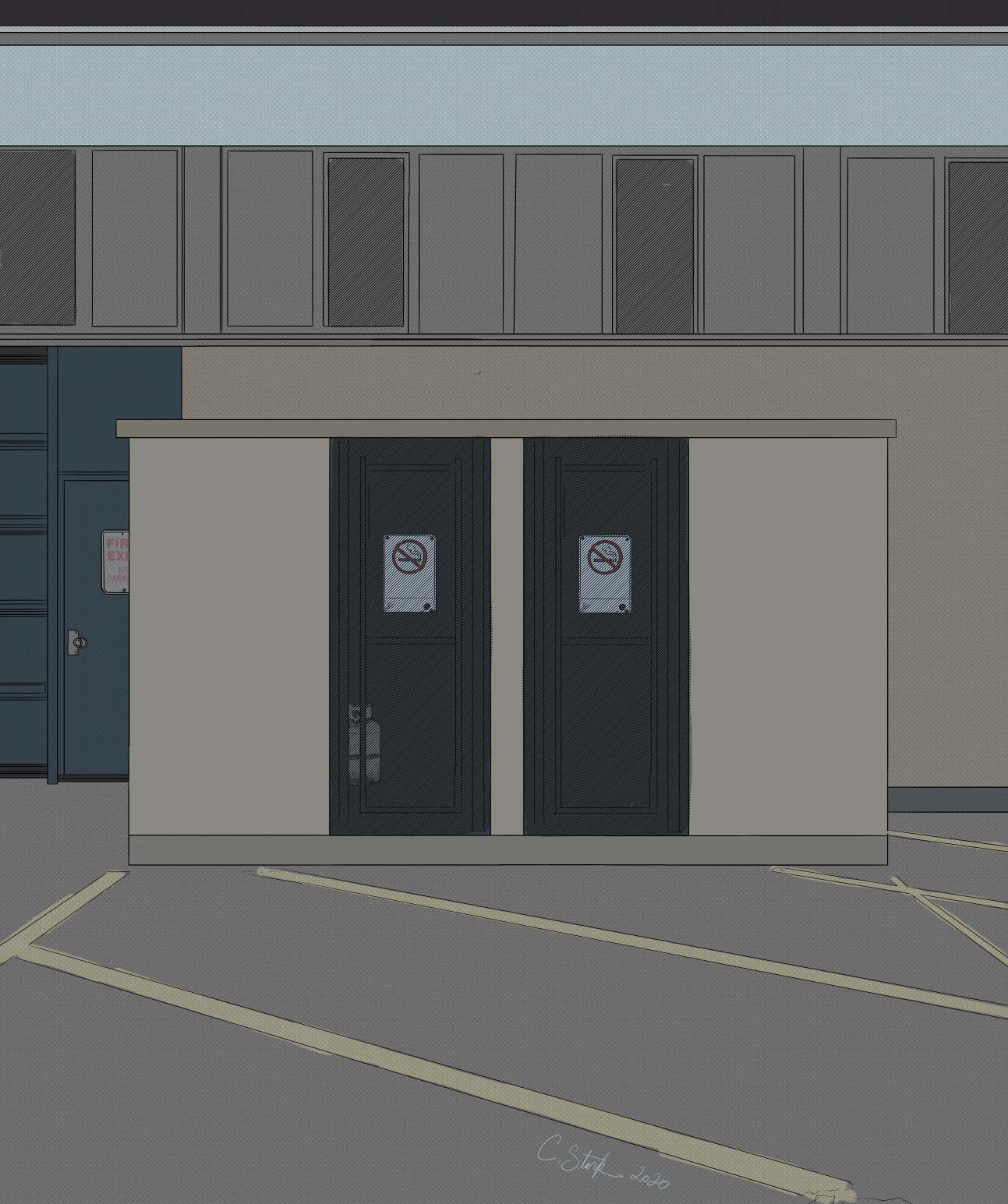
I’ve been in art studios in the Waterloo Region as a student, an artist, and an art teacher since the mid-1980s. I guess that roughly puts me in Grade 38+. That’s given me lots of time to think about what art means to me and how it shapes and moves through our community spaces.
I often tell my students that their ideas, concepts, and processes are as powerful as their finished artworks, that their voices are important. We need to invest in creative spaces to allow for creative ideas and voices to grow, not only as individuals but as a community. It is amazing to see so many people model and showcase the importance of critical thinking, creativity, and community involvement.
The initial image was created when considering the “institutional space(s)” of CHCI. Depicted is a storage area and exterior door for the school workshops. The work explores how interior and exterior spaces interact as well as the role industrial and institutional spaces can have in creating safer, creative spaces.
Conan Stark
Head of Visual Art
Cameron Heights C.I.
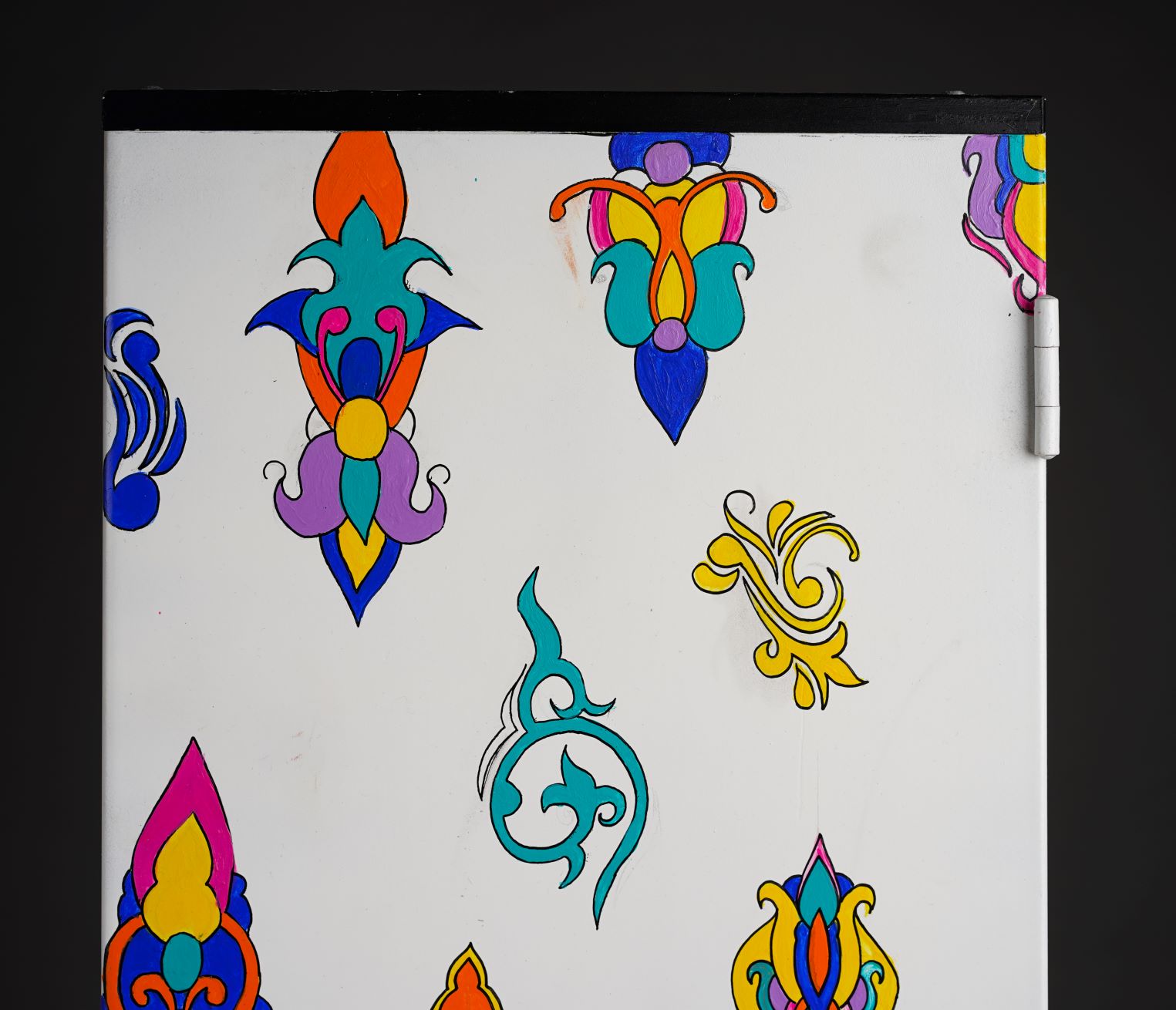
Locker Art
Areeba Shaikh
During the summer, I was introduced to an artist named Mélika Hashemi. Speaking with her inspired me to use marginality and resistance as sites for deep research, “essentially not limiting or feeling limited by a single medium or the need for it to be a visual product”. Her art and process spoke to me, making me want to use art to challenge the status quo and the traditional meaning of art.
Persian art is normally found woven into fabrics and adorning architecture (such as on domes, iwans, and muqarnas). Placing these intricate designs, which reflect my cultural heritage, on a school locker modernizes an ancient art. These lockers were also meant to be thrown out; by reusing one and turning it into something new, this project also speaks to the value of upcycling.
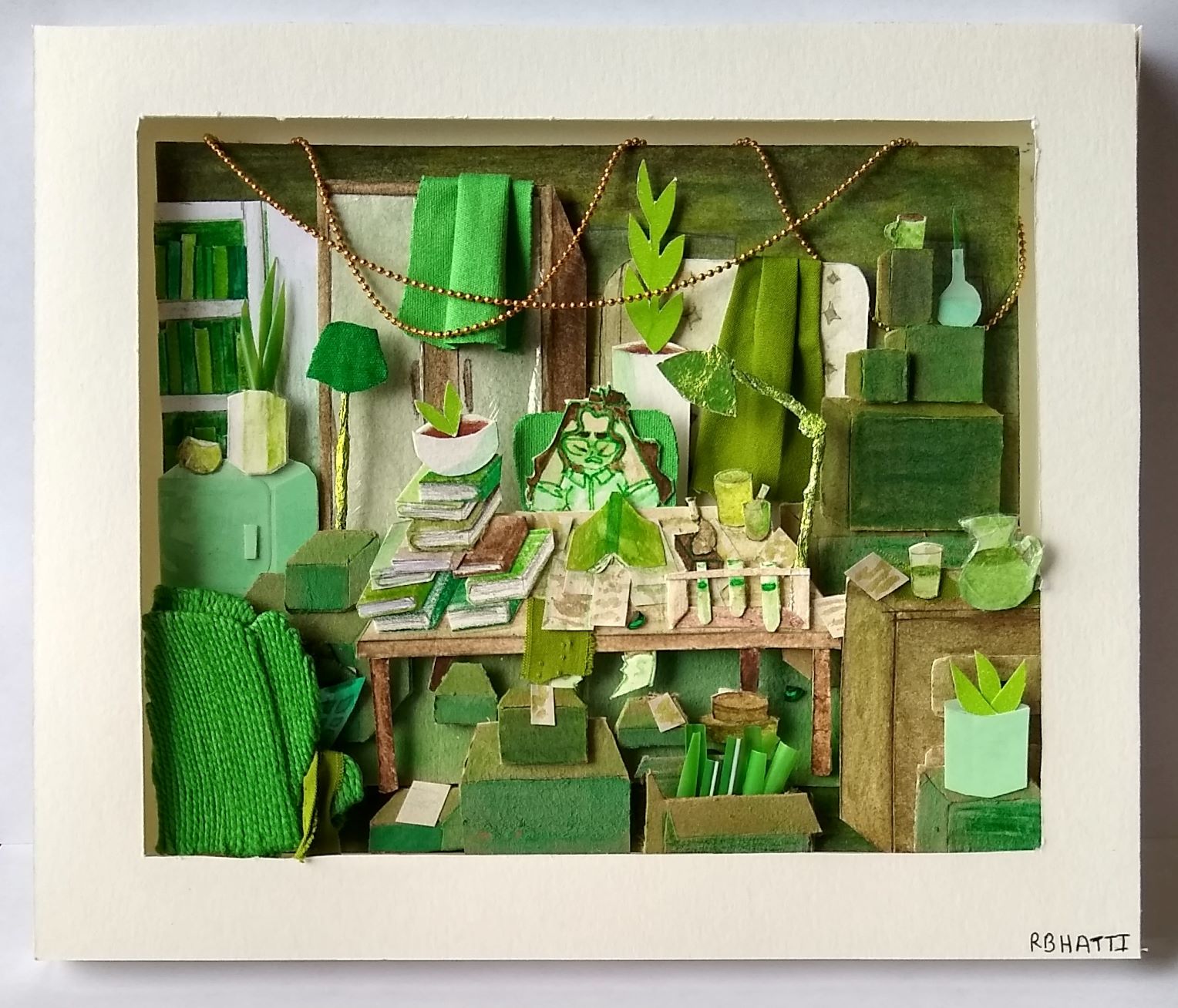
Disorder
Rumaisa Bhatti
Disorder can refer to a cluttered room, or to a lack of order in one’s mind. In this piece, I hoped to achieve a sense of chaos through the use of textural diversity, and a lack of negative space to make the picture overwhelming, while keeping the colour palette the same for cohesion.
Our minds are like rooms, where it’s easy to create a cluttered and disheveled space no matter how careful we might be. That’s why we need to give space to those whose mental health and illness are overwhelming, and to ourselves, because no one is perfect. Having space to organize thoughts, put away worries, and address our feelings is what people need in order to heal and thrive.
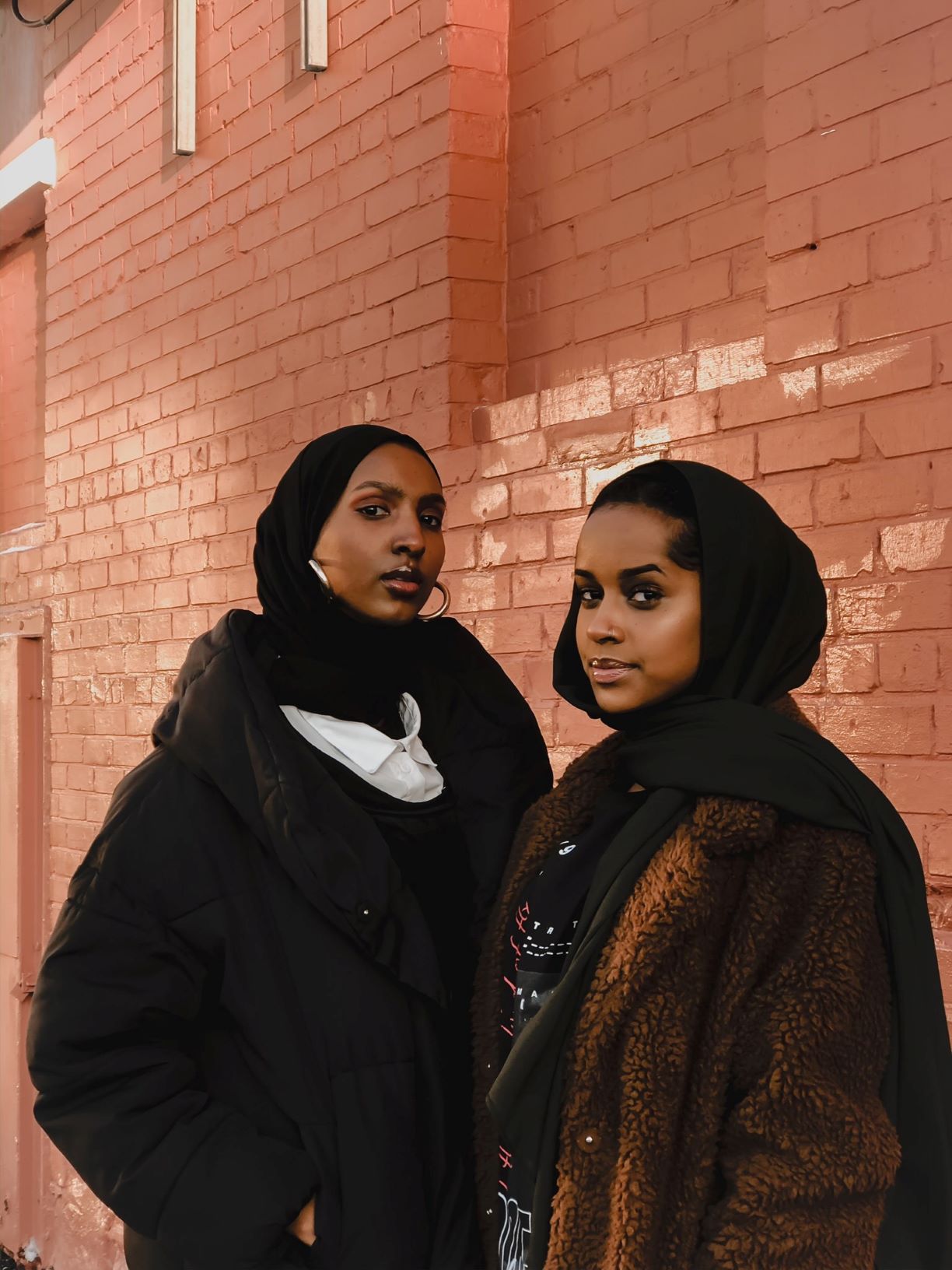
Changing Seasons
Shukri Abdi
I took these photos as the weather was getting colder. I remember thinking about how trees, even in harsh urban settings, adapt to their environments and survive. In many ways, the women behind Muse Avenue—a community-driven digital magazine that creates space for Muslim women to push boundaries and expectations—are lot like trees. They adapted and are thriving, while maintaining deep roots with their community.
These are the lovely ladies I had the privilege of photographing and who have inspired me personally. Despite pressure from my parents to become a doctor or lawyer, I fought to pursue a passion I discovered in grade 10 through an art elective. Just like the women from Muse Avenue, I defied expectations which led to my first camera, my first clients, and publication of my work.

